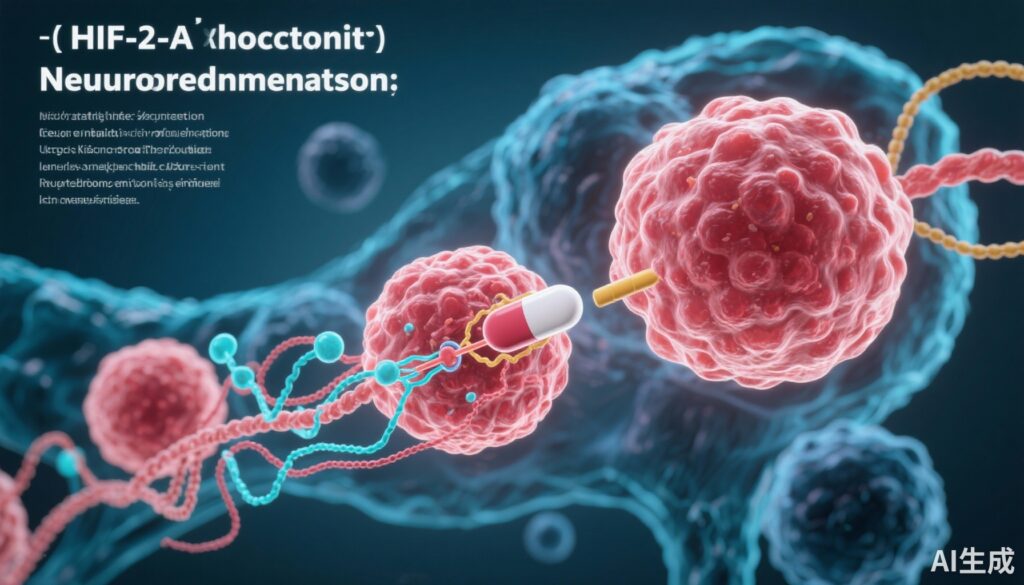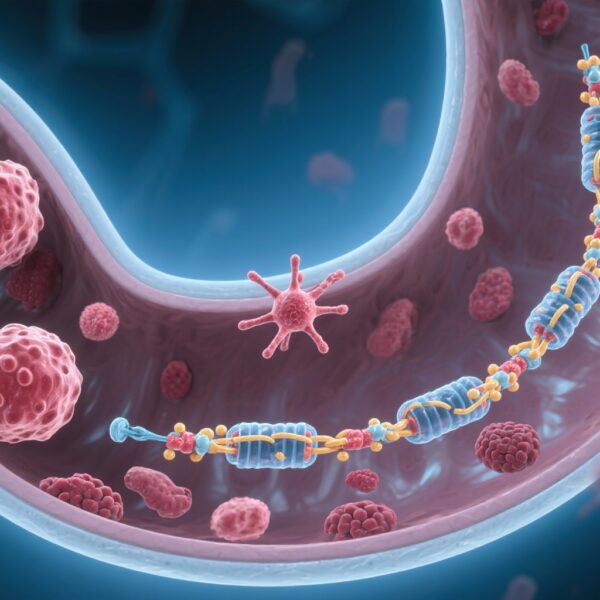Study Background and Clinical Context
Pheochromocytomas and paragangliomas are rare neuroendocrine tumors arising from adrenal medulla and extraadrenal paraganglia, respectively. Although often benign, a significant subset progresses to metastatic disease, which remains challenging to manage. Conventional therapies, including surgery, radiotherapy, and systemic chemotherapy, have limited success in advanced, inoperable cases. The burden of metastatic disease involves not only tumor progression but also hormonal hypersecretion, notably catecholamines, leading to severe hypertension and cardiovascular complications. Thus, there is an urgent need for targeted treatments that address the underlying molecular pathways driving tumor growth.
In recent years, the hypoxia-inducible factor (HIF) pathway, especially HIF-2α, has emerged as a critical driver in the pathogenesis of these tumors. Dysregulation of the HIF pathway promotes tumor angiogenesis, metabolic adaptation, and survival. This understanding has prompted the development of HIF-2α inhibitors as promising targeted therapies.
Study Design and Methodology
This international, phase 2, open-label, single-group trial enrolled 72 participants with unresectable, locally advanced, or metastatic pheochromocytoma or paraganglioma. Eligibility criteria included the presence of measurable disease and prior treatment failure or unresectability. Participants received oral belzutifan at 120 mg once daily, continued until disease progression, intolerable adverse effects, or withdrawal.
The primary endpoint was confirmed objective response (complete or partial) per Response Evaluation Criteria in Solid Tumors (RECIST) assessed by a blinded independent central review. Secondary endpoints included duration of response, disease control rate, progression-free survival, overall survival, safety, and changes in antihypertensive medication requirements.
Major Results and Data Analysis
After a median follow-up of 30.2 months, the study reported a confirmed objective response rate of 26% (95% CI, 17 to 38). Notably, 85% of patients achieved disease control, including stable disease. The median duration of response was 20.4 months, indicating durable tumor responses. Progression-free survival (PFS) median was 22.3 months, and the estimated overall survival at 24 months was 76%.
A significant subset of patients experienced improvements in blood pressure management; among 60 hypertensive participants, 19 (32%) exhibited at least a 50% reduction in antihypertensive medication dose over six months.
Safety analyses revealed high overall adverse event rates (99%), primarily mild to moderate. The most common serious adverse event was anemia, Grade 3 in 22% of patients, with treatment-related serious events in 11%. Anemia management was critical and consistent with the mechanism of action affecting erythropoiesis.
Clinical Implications and Expert Interpretation
The promising activity of belzutifan underscores the importance of targeting hypoxia pathways in neuroendocrine tumors. Durability of responses and improvements in hypertensive control suggest meaningful clinical benefits. Nonetheless, hematologic toxicity warrants close monitoring, and further studies are needed to establish optimal management strategies.
The study’s limitations involve its single-arm design and relatively small sample size. Future randomized controlled trials could solidify its role in treatment algorithms. Additionally, molecular profiling may identify patients most likely to benefit, advancing personalized medicine approaches.
Conclusion
Belzutifan demonstrates substantial antitumor activity with durable responses in advanced pheochromocytoma and paraganglioma. Its capacity to also reduce hypertension emphasizes its dual therapeutic potential. These findings mark a significant step toward targeted therapies that interfere with tumor hypoxia signaling, offering hope for patients with limited options.
Funding for the study was provided by Merck Sharp and Dohme, and the trial is registered (NCT04924075). Continued research will clarify its position within multidisciplinary management protocols and explore combination strategies to enhance efficacy and safety.



